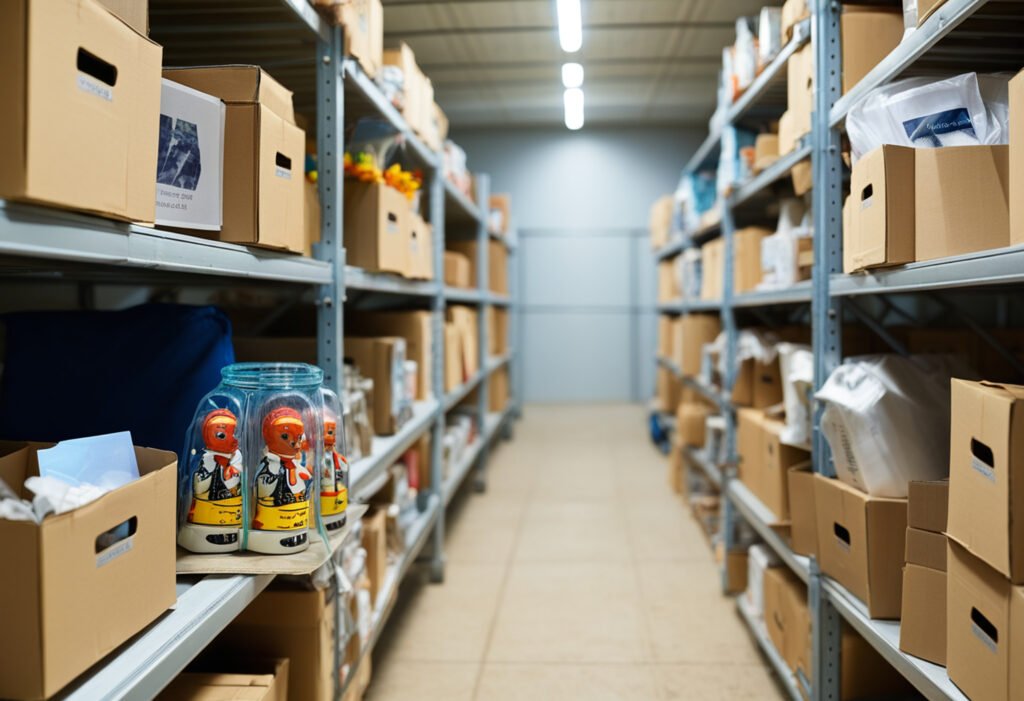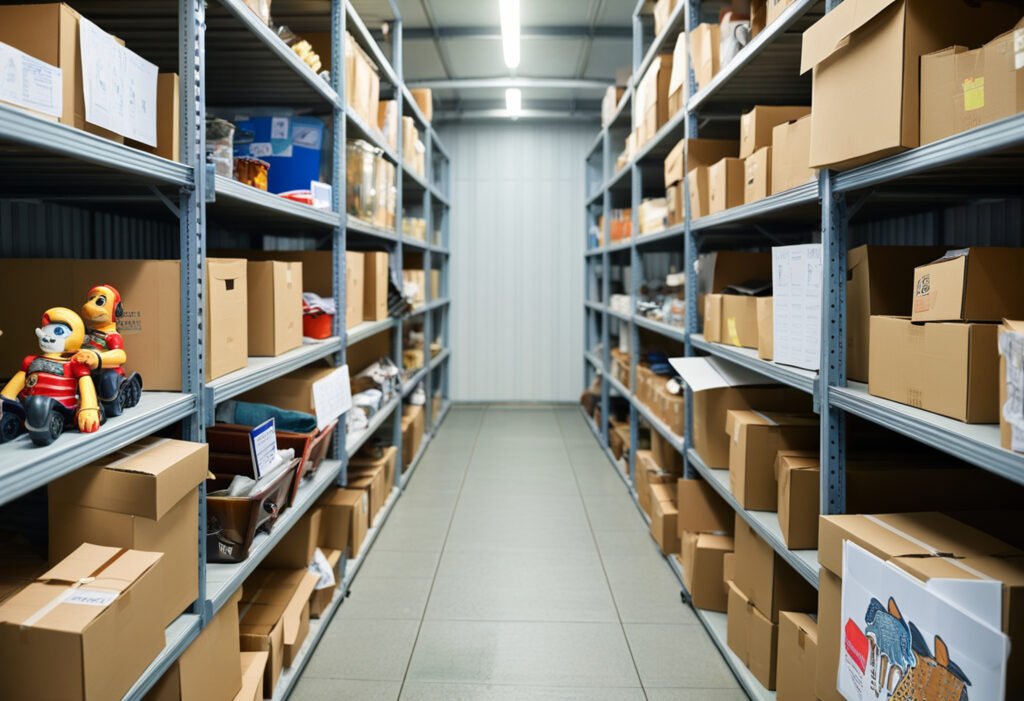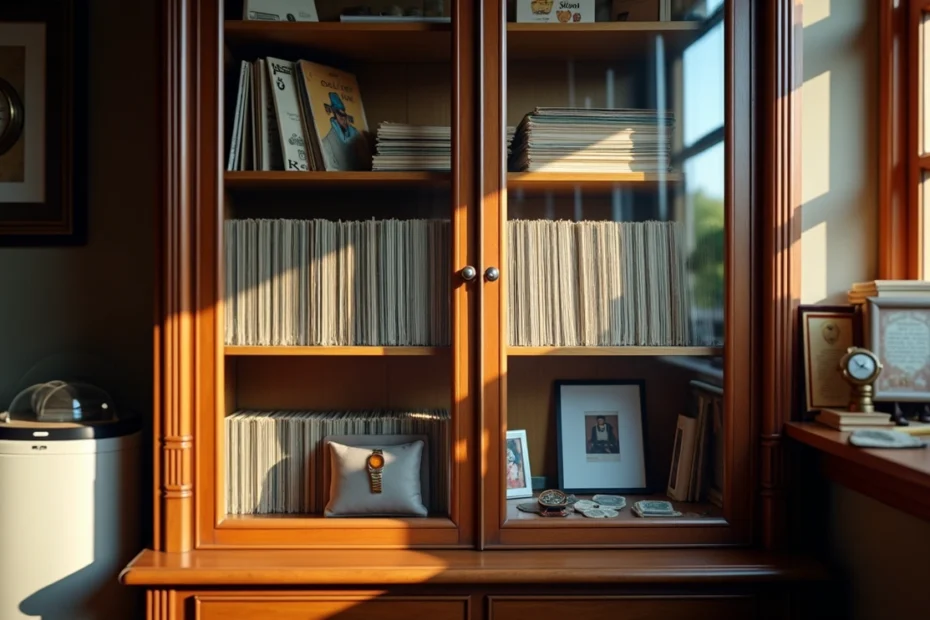The US collectibles market stands at $1.6B and keeps growing steadily. Some collectors own pieces worth more than their homes and cars combined. But many people damage these valuable investments because they don’t store them properly in a storage facility for collectibles.
Humidity and sunlight can destroy precious collections quickly. Your treasures face serious damage from extreme environmental changes if you don’t think about climate control. I’ve watched collectors lose money just because they used the wrong storage boxes. Simple mistakes like choosing poor containers or incorrect glass storage can get pricey fast. Small collectibles need their own special storage solutions, too.
This piece will show you how storage mistakes can decrease your collection’s value. You’ll learn about environmental factors that affect your items and the best ways to protect your investments. By the time you finish reading, you’ll see why your current storage might cost you thousands—and better yet, how to prevent that from happening.
Common Storage Mistakes That Devalue Your Collection

“The true adversaries are often invisible, insidious, and relentless.” — Johnson Storage & Moving Co., Professional storage provider specializing in collectibles and rare items
Using non-archival materials
Collectors often make a costly mistake by using standard storage materials instead of archival-quality alternatives. Many people store valuable items in regular cardboard boxes without realizing that these materials contain acids and harmful chemicals that damage their collections. Standard materials release chemicals that cause yellowing, brittleness, and permanent staining over time.
The smallest details can affect your collection’s condition. Regular tape, glue, and plastic wrap trap moisture and promote mold growth. Your storage for collectibles needs acid-free boxes, mylar or polypropylene sleeves, and pH-neutral materials that won’t react with your treasured items.
Storing in attics, basements, or garages
These convenient locations rank among the worst places to store collectibles. Water tends to accumulate in basements during rainy seasons. Summer temperatures in attics can get pricey as they reach 130 degrees. Garages let pests and rodents damage your items easily.
The dramatic shifts in temperature and humidity speed up deterioration in these spaces. Your investment deserves better protection in climate-controlled environments with stable conditions.
Stacking or overcrowding fragile items
Packed storage containers create pressure damage that you can’t reverse. Collectibles crack, bend, or scratch against each other without proper cushioning. Vinyl records need special attention – store them upright rather than stacked horizontally to avoid warping.
Delicate pieces need individual compartments in storage boxes. This ensures each item has enough space. Glass storage offers good visibility while protecting your collectibles from dust and physical damage.
Ignoring proper labeling and inventory
Clear labels prevent accidental mishandling of fragile items. They help identify contents in storage for small collectibles without unnecessary handling. A detailed inventory with photographs serves as a rich source of documentation. You can use it to track value changes, prove ownership, and support insurance claims if items get lost.
Your digital catalog should include condition notes, acquisition dates, and special handling requirements. This system helps you retain control while preserving your collection’s value. Finding specific pieces in your storage containers becomes easier, too.
How the Environment Affects Collectibles Over Time
“A sudden spike in heat can cause materials to warp, crack, or fade. Too much humidity invites mold, mildew, and insect infestations, turning a valuable historical document into a fragile ruin.” — Johnson Storage & Moving Co., Professional storage provider specializing in collectibles and rare items
## How Environment Affects Collectibles Over Time
Your treasured items face more damage from silent environmental forces than physical mishandling. Even the best storage containers won’t protect collectibles if you don’t manage environmental factors properly.
Humidity and temperature fluctuations
Invisible moisture in the air constantly affects your collectibles. Relative humidity below 40% makes organic materials dangerously brittle. They might shrink, warp, split, or crack. High humidity above 70% forces materials to absorb moisture. This leads to swelling, warping, or structural damage. These conditions create the perfect environment for mold and fungal growth.
Temperature changes make these issues worse. Materials expand in heat and contract in cold, which creates internal stress. The biggest problem appears in composite collectibles where different parts expand at different rates. To name just one example, wooden parts of antique furniture expand while metal fixtures stay stable. This eventually causes warping or splitting.
Sunlight and UV exposure
UV light damages collectibles slowly and quietly until you notice permanent damage. These rays break down molecular bonds in dyes and materials. The result shows up as fading, discoloration, and weakening. Glass storage helps protect collectibles, though UV-filtered glass works better.
Direct sunlight poses an even bigger threat. Dark materials can heat up to 75°C on warm summer days. Such high temperatures warp plastic components, break down adhesives, and turn papers yellow fast.
Dust and air pollutants
Dust does more than look bad – these tiny abrasive particles get into every crevice of your collectibles. Handling dusty collections creates micro-scratches that permanently damage surfaces. Small collectibles need special protection from this hidden threat.
Air pollutants speed up chemical reactions in your collectibles. These come from outside sources like vehicle exhaust, and indoor ones like wood furniture emissions. The reactions make metals tarnish, dyes fade, and materials weaken as time passes.
Why climate-controlled storage matters
Climate-controlled storage keeps temperature and humidity steady all year. This stops the damaging cycle of expansion and contraction. Better air quality comes from continuous circulation, which prevents moisture from building up and causing mold and mildew.
Serious collectors can’t skip climate control – it protects their treasures’ value and integrity. Climate-controlled storage boxes might get pricey at first, but they prevent much costlier damage to your investments.
Item-Specific Storage Tips to Avoid Costly Damage
Each type of collectible faces unique preservation challenges. You need tailored storage solutions to protect your valuable items based on their specific vulnerabilities.
Vinyl records and CDs
Your vinyl records need vertical storage in archival-quality sleeves to prevent warping from pressure. Switch out paper inner sleeves for polyethylene or polypropylene alternatives that won’t scratch the surface. The Northeast Document Conservation Center suggests keeping temperatures between 50-60°F with humidity levels of 30-40% for long-term record storage. Attics and basements will cause permanent damage through temperature changes, so keep your records elsewhere. A quick clean with an anti-static brush before storage stops dust from building up in grooves.
Books, comics, and magazines
Comics and valuable books can deteriorate faster without proper care. Start by cleaning them with paper cleaning pads to remove oils and dust that speed up deterioration. Comics need the “bag and board” method with acid-free backing boards and archival-quality sleeves. Store them upright in acid-free storage boxes or lay them flat if they’re very valuable. Your magazines need bags with acid-free boards, and you can separate pages with acid-free paper if needed.
Coins, stamps, and banknotes
Keep coins in acid-free holders or velvet trays in cool, dry spots to prevent tarnish. Paper money needs polyethylene, polypropylene, or polyester sleeves—avoid PVC since it releases harmful chemicals. Hard plastic currency cases made from inert polystyrene or acrylic work best for valuable notes.
Antique furniture and artwork
Canvas paintings need vertical storage in climate-controlled conditions, wrapped in breathable cloth to stop mildew. Take furniture apart when possible and wrap each piece separately before storage. A good polish on wooden surfaces helps prevent deterioration, and oiled metal frames resist rust better. Always use gloves to handle antiques so oils and dirt don’t transfer.
Watches, clocks, and small collectibles
Watches do best in cases with proper cushioning. Keep them away from direct sunlight and moisture since UV rays fade dials and discolor glass. Safes or deposit boxes protect valuable timepieces, especially during travel. Small collectibles belong in divided boxes with crumpled acid-free tissue or foam for protection.
Using proper storage boxes and containers
Clear plastic storage containers let you see what’s inside without handling and work better than cardboard at keeping out water and pests. Shelving racks protect fragile items better than stacking them. Line container bottoms with acid-free paper and wrap items separately. Pick containers that match your collectibles—acid-free, buffered boxes for paper items and airtight options for moisture-sensitive pieces.
Better Storage Solutions That Save You Money

Smart storage choices for collectibles can save you from pricey restoration work later. Your items will maintain their condition and value when you store them properly.
Choosing the right storage containers for collectibles
Acid-free materials protect your valuables from harmful chemicals. Paper collectibles need acid-free boxes and archival-quality storage bags to prevent damage. You should choose plastic containers with care—pick ones that won’t break down or release harmful chemicals. Your fragile items need protection from soft materials like acid-free tissue paper or bubble wrap.
Benefits of glass storage for collectibles
Glass display cabinets let you see your items clearly while keeping them safe. You can view your collection from different angles without exposing it to dust or handling. These cabinets protect against fingerprints and accidents while keeping environmental hazards away. Many come with adjustable shelves and lights that make your display look great without risking damage.
Using shelving and elevation to prevent floor damage
Your collectibles should never touch the floor. Items stored at ground level risk water damage, mold, and pest problems. Shelving units or pallets keep your collection safe above ground. Metal shelving works best for rare books because wood releases acids that harm paper.
How to organize for easy access and minimal handling
A well-organized collection by theme, size, or era creates attractive displays and reduces handling. These practices help maintain value:
- Keep items separate with proper dividers
- Add clear labels to avoid unnecessary searching
- Keep a digital inventory with condition notes and photos
Conclusion
Your valuable collectibles need more than simple storage solutions to stay protected. We’ve seen how poor storage methods can quietly reduce your treasured items’ value. Regular cardboard boxes release harmful acids. Attics and basements expose collections to damaging temperature changes. Of course, these small oversights add up over time and can cost thousands in lost value.
Collections need stable environments to last. Changes in humidity make materials expand and contract. Unfiltered sunlight breaks down molecular bonds slowly. A climate-controlled storage space isn’t just a luxury – it’s a smart investment for serious collectors. Special storage solutions made for specific items – like vertical storage for vinyl records or acid-free sleeves for comics – extend their life by a lot and keep their value intact.
Premium storage options might get pricey at first, but they save money down the road. They prevent damage that would need expensive restoration or cause permanent value loss. Your organization’s system also cuts down on handling, which reduces damage risk even more.
Your collection represents both money invested and personal passion. The right storage containers, a stable environment, and proper organization should be your top priorities. Small changes you make today can protect thousands in value for years ahead. Don’t see proper storage as just another cost – call it a vital part of collecting that protects both your investment’s money value and sentimental worth.

